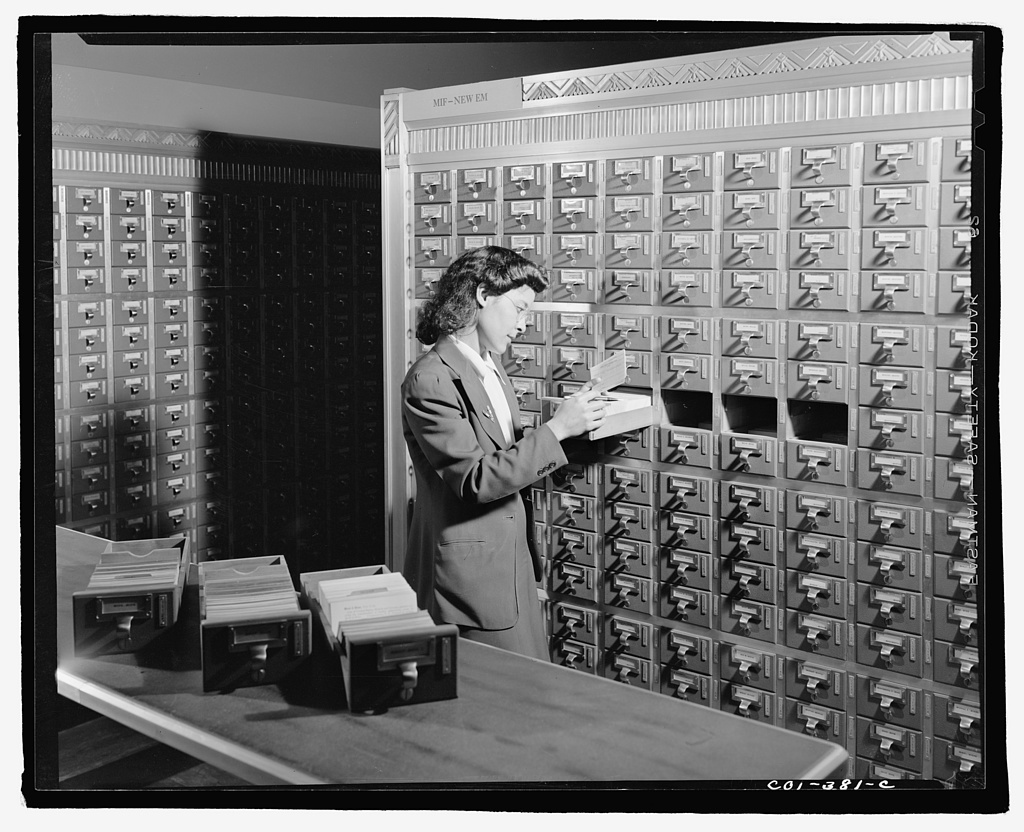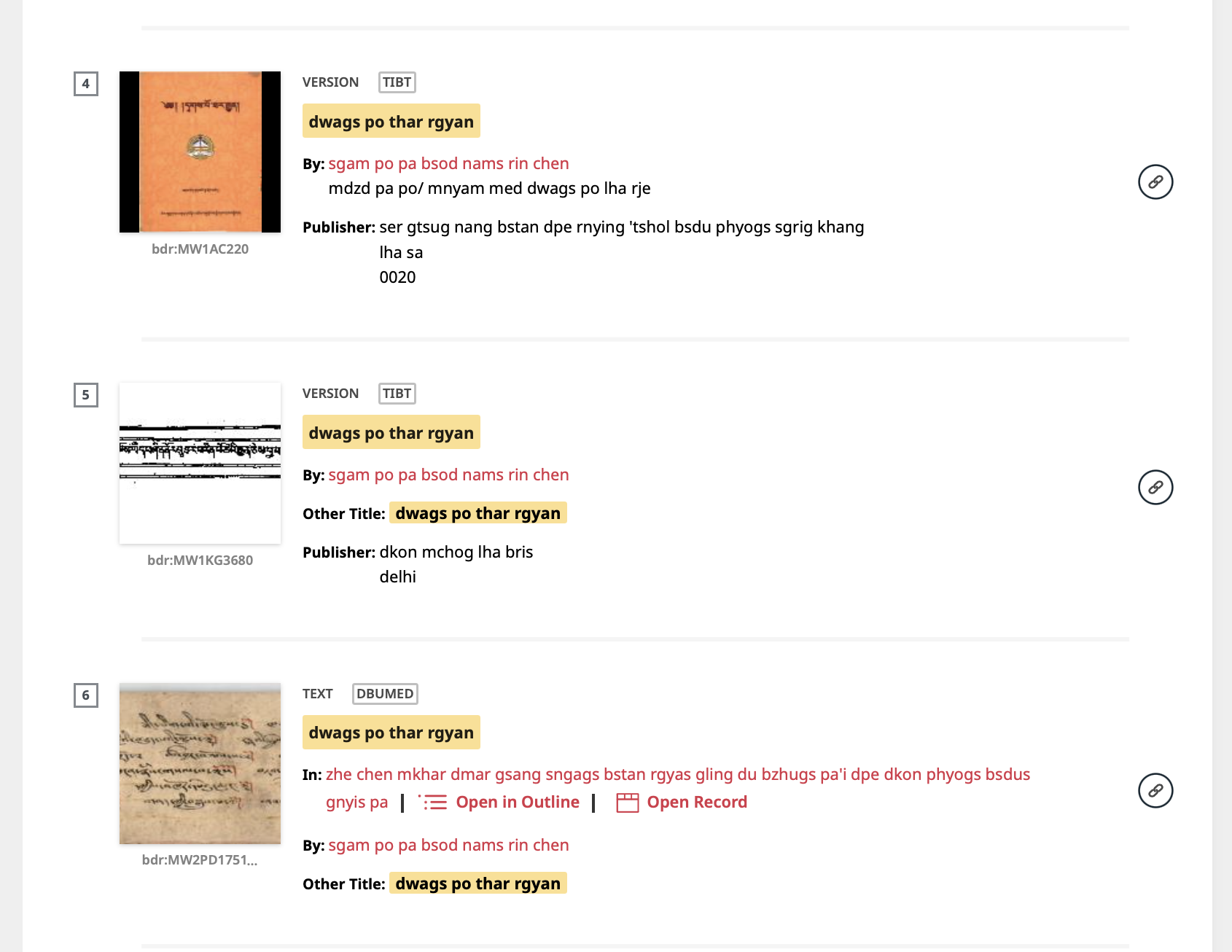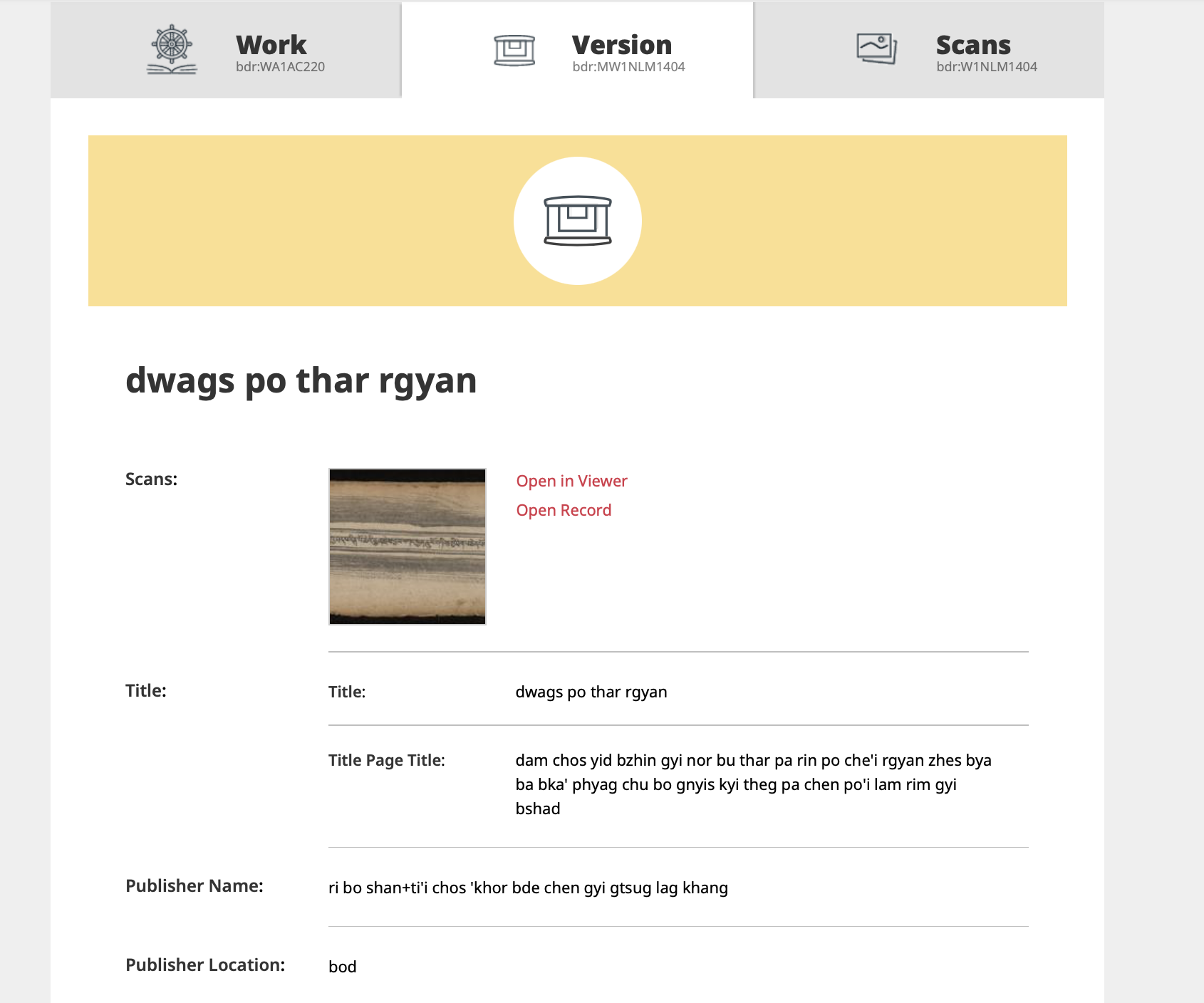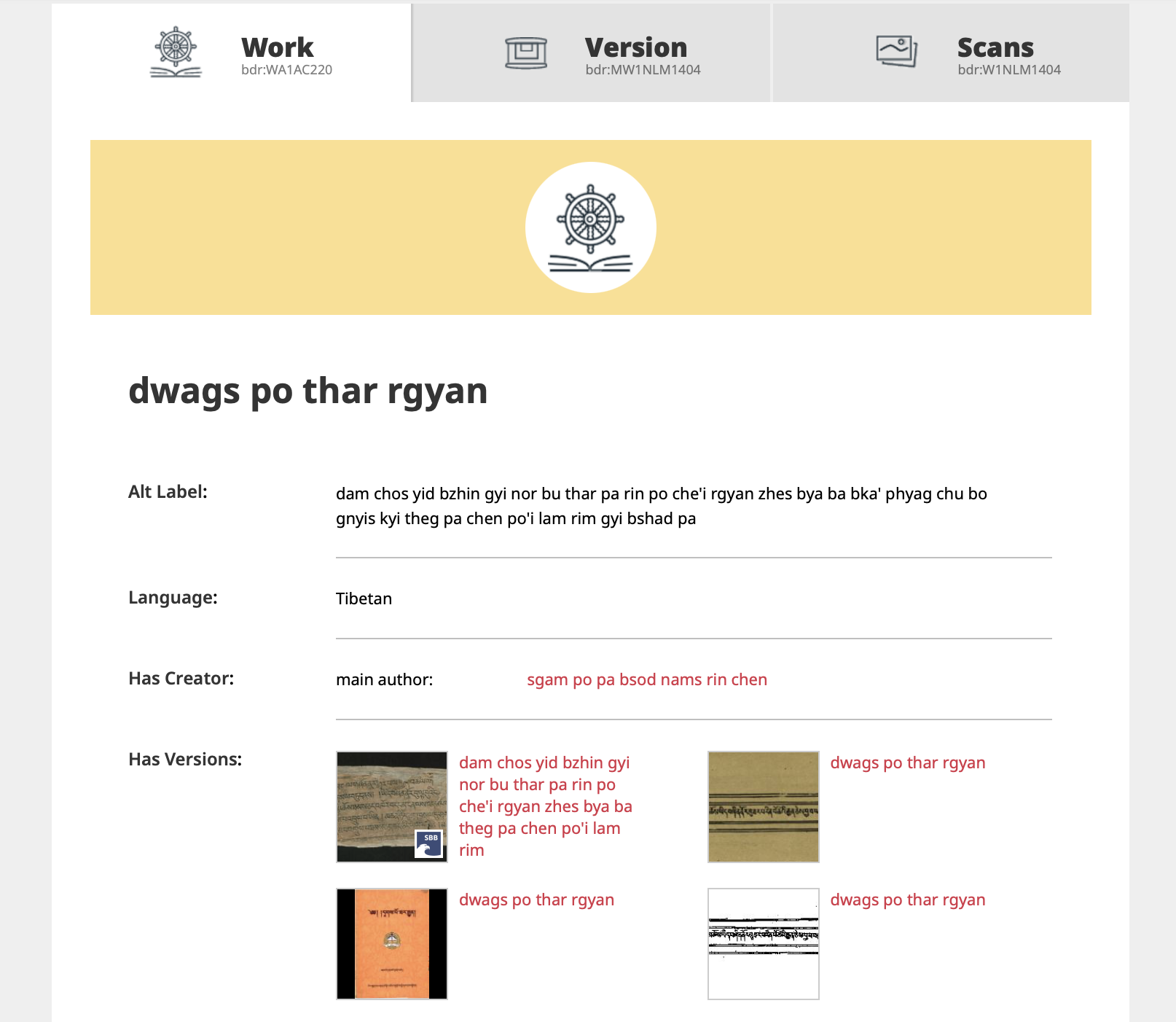
Image from Library of Congress, Prints & Photographs Division, Farm Security Administration/Office of War Information Black-and-White Negatives.
Our new website includes improvements to both the user interface and the architecture of the data. In this post we will introduce one of the changes to our data architecture and how this change will affect your searches. As our users know well, BDRC's massive archive contains tens of thousands of individual texts, and for 15,000 of these texts our archive contains multiple distinct versions. For instance, BDRC has over 30 unique versions of the 12th-century classic Dakpo Targyen (dwags po thar rgyan), or Jewel Ornament of Liberation, by Gampopa. One of the reasons that many texts have multiple associated versions is the wide variety of book formats found in Tibet, including manuscripts, xylographs, modern printed books, and etexts. For the Dakpo Targyen, BDRC possesses multiple distinct versions of each of these four formats. Indeed all large libraries have multiple versions of certain texts; think of all the various versions of the play Hamlet found in a typical Anglophone library. In the last decade new library practices have emerged for representing variant versions of a given work in order to make it easier for researchers to access all available versions and distinguish between them. Here is an example of how the interface of Oxford University's library search tool displays its multiple copies of the various English translations of the Tibetan Book of the Dead:

Note that this search result is not for a single physical book on the shelves, as suggested by the icon of three pages instead of an icon of a single book. Rather, the search result is an umbrella record for all "versions" of Tibetan Book of the Dead in English. In developing BDRC's new library platform, we took the opportunity to implement these data practices so that our users would benefit from more of our archive's riches and insights.
To say that BDRC has 34 versions of the Dakpo Thargyen creates a distinction between the Dakpo Thargyen as an idea and specific representations of the Dakpo Thargyen. Gampopa's masterpiece exists as an intellectual entity and also as a physical or digital text that has been reproduced and edited many times over the last 800 years and for which many old copies are still extant. Imagine these two use cases.
- "I'd like to see all of the available xylograph editions of the Dakpo Thargyen because I'm interested in the history of Kagyu printing."
- "I need an easy-to-navigate paperback version of the Dakpo Thargyen because I simply need to check the wording of a particular passage."
These two hypothetical research needs reflect how we usually think of and talk about books; taking for granted that there are at least two aspects to a text, the notion of a text in the abstract and the concrete level of physical and digital instances of said text. BDRC has encoded this commonplace and practical understanding into our bibliographic model. The terms used on BUDA for this model are non-technical: work and version.
"Work" denotes the abstract, essential idea of a particular text, as in the Dakpo Thargyen. "Version" is the term we use to refer to actual instances of a given work in our archive.
Despite being the same text, so to speak, each version has distinctive features related to its medium, printing history, paratexts, and other such traits. Note that distinct versions of a work do not necessarily differ in terms of content.
The default search setting on BUDA is set for versions.

The search interface helps you distinguish between versions of the same work by showing thumbnails of each version in the archive (which helps one quickly distinguish between xylographs, manuscripts, modern book formats, etexts, and so on).

Once you have searched for a text title using the default setting of "in versions" and selected a specific version, you will arrive at a bibliographic record. Take, for example, the following woodblock print of the Dakpo Thargyen:

Perhaps the first thing you will notice is the presence of three tabs along the top of the page: Work, Version, and Scans. In this case the bibliographic record is opened to the Version tab. The metadata presented in the Version tab includes information relevant to this version:
- The title page title of this version (these might vary somewhat, version to version)
- Publication information
- Script
- Print method
- Size
- Notes referring to this version and/or BDRC's scans of this version
To the left of the Version tab is the Work tab. The Work tab provides the metadata relevant to all editions (title, author, and subject matter). Most useful of all, the Work tab groups together all of BDRC's versions of the text at hand for easy browsing of other versions of the queried work.

The scans tab features the image viewer for the images of the specific version that one is exploring.
The distinctions between Work and Version are based on the BIBFRAME 2.0 metadata model, which is becoming standard throughout the world. Using this model will allow us to generate more complex metadata, while also making our collection interoperable with a growing number of institutions worldwide.
Note: The grouping of related Works and Versions involves a fair amount of manual curation by BDRC's expert librarians. It is an ongoing process and over time the records for individual works will become more and more comprehensive.





Sorry, the comment form is closed at this time.